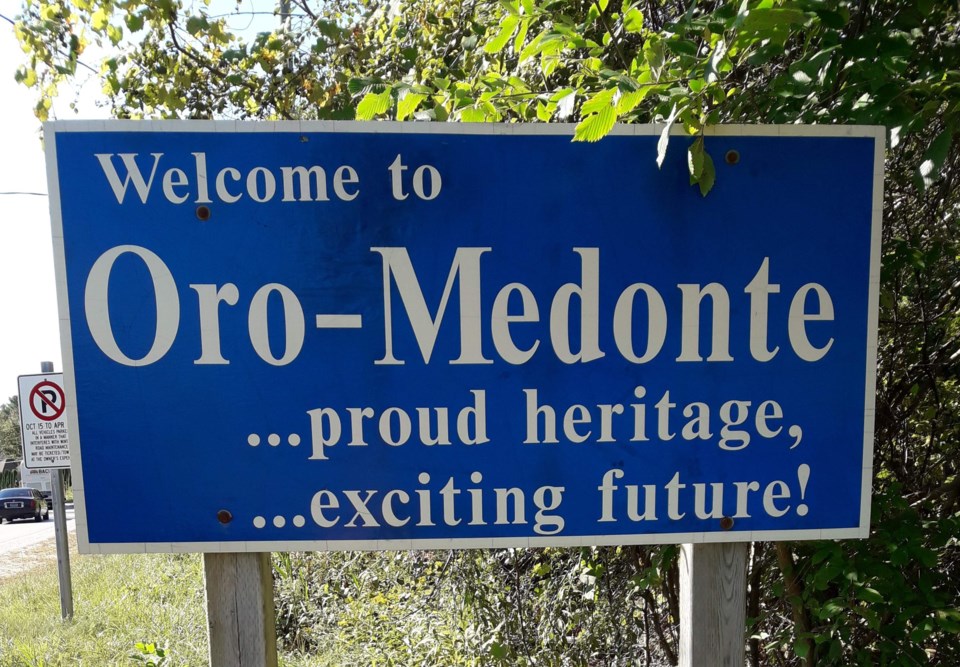Changing behaviours can be a challenge, but people in Oro-Medonte are willing to give it a try if it helps protect the environment.
At the township’s last council meeting, council voted unanimously to support a program that is targeting a five per cent reduction in greenhouse gas (GHG) emissions from the community and a 10 per cent reduction in GHG emissions from the corporation itself.
“It’s nice to see that this township is actually stepping to the plate and walking their talk, not just saying they’re going to be climate conscious, which is important,” Oro-Medonte Mayor Randy Greenlaw said after hearing a presentation delivered by Emily Hawton, a summer student with the township’s environmental services group.
“It’s the actions that you take that help us get to where we need to be," the mayor added.
Reducing emissions is part of the township’s commitment to the Partners for Climate Protection (PCP) program.
In June 2023, Oro-Medonte was invited by the Severn Sound Environmental Association (SSEA) to join the FCM-ICLEI PCP program.
The program is administered by Local Governments for Sustainability (ICLEI Canada) and the FCM (Federation of Canadian Municipalities) and receives funding from FCM's Green Municipal Fund and ICLEI Canada.
It consists of a five-step milestone framework that guides members on how to take action against climate change by reducing emissions.
The five milestones are:
- create a baseline of community and corporate (ie. municipal) GHG emissions
- create a 10-year reduction target for community and corporate emissions
- develop a plan
- implement the plan
- monitor results by recalculating the baseline and seeing how well the township did at reducing community and corporate GHG emissions.
The first milestone was to perform a GHG inventory and provide baseline data.
For corporate emissions, Hawton said the township conducted an internal audit of utility bills from 2022 and 2023.
“We used 2023 data for GHG inventory as it was the most accurate representation of how we operate annually and we had the most confidence in this year's data,” she said.
Hawton said the township has approximately 60 facilities, including the local arena, fire halls, office buildings, public work yards and community halls. It also has a fleet of vehicles that contribute to GHG emissions.
To calculate the community emissions, Hawton said the township collaborated with the SSEA to source the energy and natural gas data from Hydro One and Enbridge through municipal postal codes.
“We then summarized the raw data and uploaded it to the PCP milestone tool website where the tool converted our data into metric tonne CO2 (carbon dioxide) equivalents,” Hawton said.
According to Hawton’s presentation, the township’s total GHG emissions in 2023 were 130,944 metric tonnes of CO2 equivalent — 1,734 of them generated by corporate activities. The remaining 129,211 metric tonnes of CO2 equivalent came from the community.
The largest contributor to the corporation’s emission total was its vehicle fleet, which accounted for almost half (49 per cent) of the corporate total.
The township’s community arena generated the single largest facility volume of GHG — 100 metric tonnes of CO2 equivalent.
Hawton offered a couple of relative examples for those who can’t envision what 100 metric tonnes of emission would look like.
“As Asian elephant weighs approximately five tonnes, so you could say the community arena is producing close to 20 elephants worth of CO2 equivalents,” she said. “If imagining that many elephants is hard for you, a blue whale can weigh around 100 metric tonnes.
“You could also say our community arena is emitting close to a whale’s worth of CO2 in 2023," Hawton added.
On the community side, Hawton’s report said on-road transportation was the single largest contributor of GHG, accounting for 48 per cent of the township’s 129,211 metric tonnes of CO2 equivalent.
To accomplish Milestone No. 1, in addition to developing a baseline, the township had to submit a 10-year, business-as-usual forecast for both community and corporate emissions.
“If we continue to operate business-as-usual, by 2033 the Oro-Medonte communities would be emitting close to 135,000 tonnes of CO2 equivalents, an increase of 5,000 tonnes of CO2 equivalents compared to our 2023 baseline,” Hawton said.
For Milestone No. 2, the township is required to set a community and corporate reduction target.
“We are proposing a five per cent community reduction target, which would bring the community total to 122,000 tonnes of CO2 equivalent by 2033,” Hawton said. “Compared to the 2023 baseline, it’s a reduction of 6,500 tonnes of CO2 equivalent."
On the corporate side, the township is targeting a 10 per cent reduction by 2033.
Compared to the 2023 baseline, achieving the 10 per cent reduction would result in a decrease of emissions by 173 tonnes of CO2 equivalent.




.png;w=120;h=80;mode=crop)